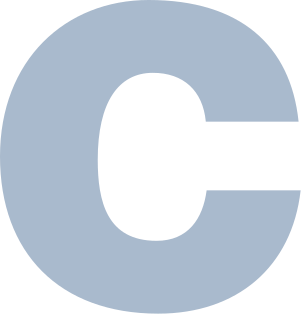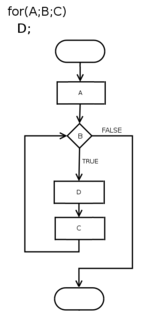In computer programming, a logic error is a bug in a program that causes it to operate incorrectly, but not to terminate abnormally (or crash). A logic error produces unintended or undesired output or other behaviour, although it may not immediately be recognized as such.
Logic errors occur in both compiled and interpreted languages. Unlike a program with a syntax error, a program with a logic error is a valid program in the language, though it does not behave as intended. Often the only clue to the existence of logic errors is the production of wrong solutions, though static analysis may sometimes spot them.
One of the ways to find this type of error is to put out the program's variables to a file or on the screen in order to determine the error's location in code. Although this will not work in all cases, for example when calling the wrong subroutine, it is the easiest way to find the problem if the program uses the incorrect results of a bad mathematical calculation.
This example function in C to calculate the average of two numbers contains a logic error. It is missing parentheses in the calculation, so it compiles and runs but does not give the expected answer due to operator precedence (division is evaluated before addition).
floataverage(floata,floatb){returna+b/2;// should be (a + b) / 2}In computing, a compiler is a computer program that translates computer code written in one programming language into another language. The name "compiler" is primarily used for programs that translate source code from a high-level programming language to a lower level language to create an executable program.

C is a general-purpose, procedural computer programming language supporting structured programming, lexical variable scope, and recursion, with a static type system. By design, C provides constructs that map efficiently to typical machine instructions. It has found lasting use in applications previously coded in assembly language. Such applications include operating systems and various application software for computer architectures that range from supercomputers to PLCs and embedded systems.
In programming language theory, lazy evaluation, or call-by-need, is an evaluation strategy which delays the evaluation of an expression until its value is needed and which also avoids repeated evaluations (sharing). The sharing can reduce the running time of certain functions by an exponential factor over other non-strict evaluation strategies, such as call-by-name, which repeatedly evaluate the same function, blindly, regardless of whether the function can be memoized.

A programming language is a formal language comprising a set of strings that produce various kinds of machine code output. Programming languages are one kind of computer language, and are used in computer programming to implement algorithms.
In computer science, syntactic sugar is syntax within a programming language that is designed to make things easier to read or to express. It makes the language "sweeter" for human use: things can be expressed more clearly, more concisely, or in an alternative style that some may prefer.

A software bug is an error, flaw or fault in a computer program or system that causes it to produce an incorrect or unexpected result, or to behave in unintended ways. The process of finding and fixing bugs is termed "debugging" and often uses formal techniques or tools to pinpoint bugs, and since the 1950s, some computer systems have been designed to also deter, detect or auto-correct various computer bugs during operations.
In programming languages, a type system is a logical system comprising a set of rules that assigns a property called a type to the various constructs of a computer program, such as variables, expressions, functions or modules. These types formalize and enforce the otherwise implicit categories the programmer uses for algebraic data types, data structures, or other components. The main purpose of a type system is to reduce possibilities for bugs in computer programs by defining interfaces between different parts of a computer program, and then checking that the parts have been connected in a consistent way. This checking can happen statically, dynamically, or as a combination of both. Type systems have other purposes as well, such as expressing business rules, enabling certain compiler optimizations, allowing for multiple dispatch, providing a form of documentation, etc.
In computer science, a syntax error is an error in the syntax of a sequence of characters or tokens that is intended to be written in compile-time. A program will not compile until all syntax errors are corrected. For interpreted languages, however, a syntax error may be detected during program execution, and an interpreter's error messages might not differentiate syntax errors from errors of other kinds.

Syntax highlighting is a feature of text editors that are used for programming, scripting, or markup languages, such as HTML. The feature displays text, especially source code, in different colours and fonts according to the category of terms. This feature facilitates writing in a structured language such as a programming language or a markup language as both structures and syntax errors are visually distinct. This feature is also employed in many programming related contexts, either in the form of colorful books or online websites to make understanding code snippets easier for readers. Highlighting does not affect the meaning of the text itself; it is intended only for human readers.
In computer science, primitive data type is either of the following:

In computer science, a for-loop is a control flow statement for specifying iteration, which allows code to be executed repeatedly. Various keywords are used to specify this statement: descendants of ALGOL use "for", while descendants of Fortran use "do". There are other possibilities, for example COBOL which uses "PERFORM VARYING".
A domain-specific language (DSL) is a computer language specialized to a particular application domain. This is in contrast to a general-purpose language (GPL), which is broadly applicable across domains. There are a wide variety of DSLs, ranging from widely used languages for common domains, such as HTML for web pages, down to languages used by only one or a few pieces of software, such as MUSH soft code. DSLs can be further subdivided by the kind of language, and include domain-specific markup languages, domain-specific modeling languages, and domain-specific programming languages. Special-purpose computer languages have always existed in the computer age, but the term "domain-specific language" has become more popular due to the rise of domain-specific modeling. Simpler DSLs, particularly ones used by a single application, are sometimes informally called mini-languages.
In computer science, type conversion, type casting, type coercion, and type juggling are different ways of changing an expression from one data type to another. An example would be the conversion of an integer value into a floating point value or its textual representation as a string, and vice versa. Type conversions can take advantage of certain features of type hierarchies or data representations. Two important aspects of a type conversion are whether it happens implicitly (automatically) or explicitly, and whether the underlying data representation is converted from one representation into another, or a given representation is merely reinterpreted as the representation of another data type. In general, both primitive and compound data types can be converted.
In computer science, type safety is the extent to which a programming language discourages or prevents type errors. A type error is erroneous program behaviour caused by a discrepancy between differing data types for the program's constants, variables, and methods (functions), e.g., adding a string to an integer. Type safety is sometimes alternatively considered to be a property of a computer program rather than the language in which that program is written; that is, some languages have type-safe facilities that can be circumvented by programmers who use other type-unsafe facilities in the same language. The formal type-theoretic definition of type safety is considerably stronger than what is understood by most programmers.
In functional programming, continuation-passing style (CPS) is a style of programming in which control is passed explicitly in the form of a continuation. This is contrasted with direct style, which is the usual style of programming. Gerald Jay Sussman and Guy L. Steele, Jr. coined the phrase in AI Memo 349 (1975), which sets out the first version of the Scheme programming language. John C. Reynolds gives a detailed account of the numerous discoveries of continuations.
In computer science, a relational operator is a programming language construct or operator that tests or defines some kind of relation between two entities. These include numerical equality and inequalities.

ASIC is a compiler and integrated development environment for a subset of the BASIC programming language. It was released for MS-DOS and compatible systems as shareware. Written by Dave Visti of 80/20 Software, it was one of the few BASIC compilers legally available for download from BBSes. ASIC allows compiling to an EXE or COM file. A COM file for Hello world program is 360 bytes.

In computer science, the syntax of a computer language is the set of rules that defines the combinations of symbols that are considered to be correctly structured statements or expressions in that language. This applies both to programming languages, where the document represents source code, and to markup languages, where the document represents data.
Haxe is an open source high-level cross-platform programming language and compiler that can produce applications and source code, for many different computing platforms from one code-base. It is free and open-source software, released under the MIT License. The compiler, written in OCaml, is released under the GNU General Public License (GPL) version 2.
Nemerle is a general-purpose, high-level, statically typed programming language designed for platforms using the Common Language Infrastructure (.NET/Mono). It offers functional, object-oriented and imperative features. It has a simple C#-like syntax and a powerful metaprogramming system. In June 2012, the core developers of Nemerle were hired by the Czech software development company JetBrains. The team is focusing on developing Nitra, a framework to implement extant and new programming languages. This framework will likely be used to create future versions of Nemerle.